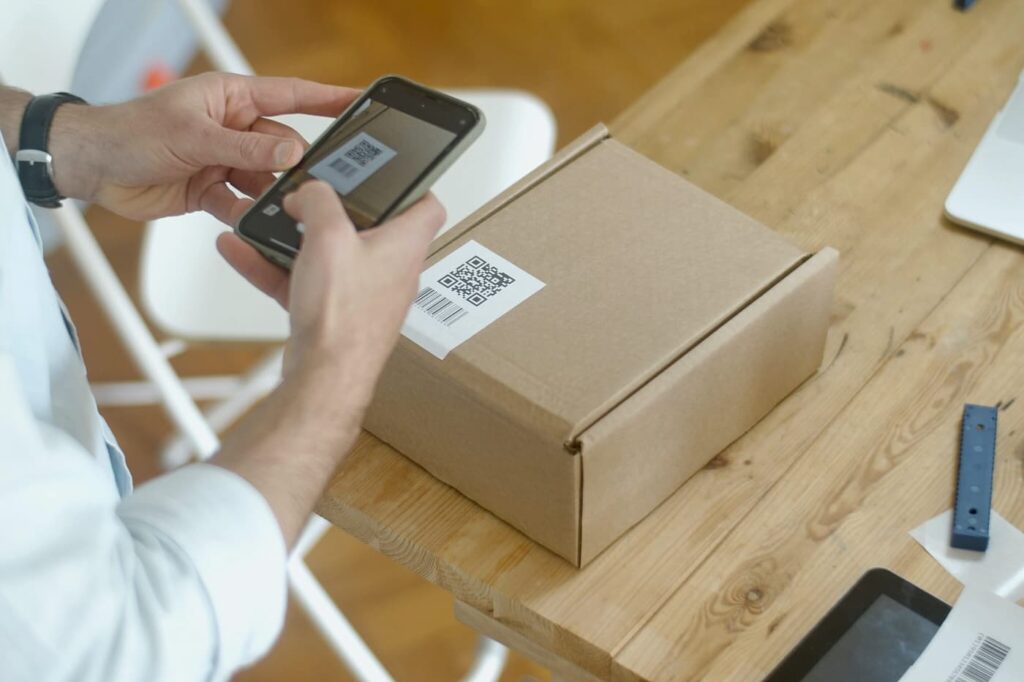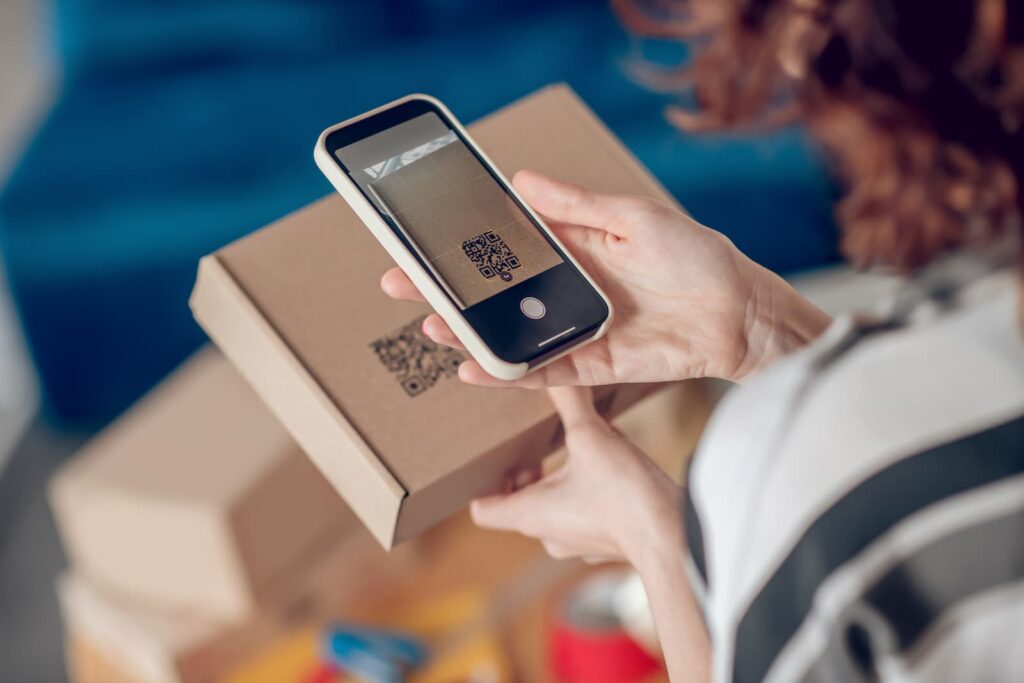
As QR codes have made their way into virtually every business, post office services are no exception. Either to offer superior customer experience or to improve backend and frontend processes, QR code technology continues to make a sound impact in one of the most competitive industries.
In this blog post, you’ll learn how you can use QR codes for your post office business, and how QR.io is your best ally to offer superior customer service and improve your current logistics. Let’s take a look!
Table of Contents
- What Is a Post Office QR Code?
- Advantages of Using QR Codes for Post Office
- How Post Offices Use QR Codes
- How to Use QR Codes at the Post Office
- Wrap-up
What Is a Post Office QR Code?
Post Office QR Codes are Quick Response codes that post service companies use to improve operations, allow for streamlined payments and shipping processes, share important business information, send delivery notifications, and operate as a prepaid shipping label, among other processes and customer-oriented functions.
Post Office QR Codes can be found at counters, on parcel packaging, in-store promo materials, and even on delivery vehicles —very much like QR codes on cars. QR codes at post offices also allow these companies to promote services, engage customers with special promos, share important business information, and much more.
Advantages of Using QR Codes for Post Office
Using QR codes in the post office offers several advantages, both on the backend and the frontend.
Efficient tracking
QR codes can be used to track packages and mail efficiently throughout the entire delivery process. Each code contains unique information about the item, allowing postal workers to scan and update its status in real time, reducing errors and improving accountability.
Enhanced security
QR codes can provide an additional layer of security by containing encrypted data about the package or mail. This helps prevent tampering or unauthorized access during transit, ensuring that items reach their intended recipients safely.
Convenience for customers
QR codes can be used by customers to track the status of their packages or receive notifications about delivery updates. By scanning the code with a smartphone or other device, customers can access information about the package’s whereabouts without having to contact the post office directly.
Streamlined processes
Integrating QR code technology into post office services can streamline various processes, including sorting, routing, and delivery. Automated scanning of QR codes speeds up these tasks, reducing manual labor and improving overall efficiency.
Cost savings
By automating processes and reducing errors, QR codes can help postal services save time and resources. This can lead to cost savings in the long run, as fewer resources are required to handle and deliver mail and packages.
How Post Offices Use QR Codes
United States Postal Service —USPS

USPS post office has integrated QR codes into its tracking system. Customers can scan a USPS QR code on shipping labels using the USPS mobile app or website to track the status and location of their packages in real time.
The company also offers the now famous USPS Label Broker service in their USPS self-service kiosk. Label Broker allows customers to print shipping labels electronically. The shipping label printed at USPS premises streamlines processes and makes it more convenient for businesses to manage their shipping needs.
Through the USPS Label Broker ID, businesses can integrate shipping label generation directly into their own e-commerce platforms or shipping systems —this unique Label Broker ID is of great convenience for customers. With ShipShaving, the company also allows customers to ship USPS packages.
Royal Mail —United Kingdom
Royal Mail introduced QR codes on postage stamps, allowing customers to scan the code with a smartphone to access additional information or services related to the stamp, such as historical background or related events.
Royal Mail also uses QR codes for delivery confirmation purposes. For example, QR codes could be included in delivery notifications sent to recipients. Recipients can scan the QR code to confirm delivery or provide delivery preferences, such as leaving the parcel with a neighbor or scheduling a redelivery.
Japan Post
Japan Post utilizes QR codes for electronic postage services. Customers can generate QR codes containing postage information through the Japan Post website or mobile app and affix them to packages for easy processing at post offices.
Australia Post
Australia Post incorporates QR codes into its Parcel Locker service. Customers receive QR codes via email or mobile app, which they can scan at Parcel Locker terminals to retrieve their packages at their convenience.
Canada Post
Canada Post employs QR codes in its mobile app for package tracking and delivery notifications. Customers receive QR codes along with tracking numbers, which they can scan to quickly access tracking information and updates on their shipments.
How to Use QR Codes at the Post Office

Post offices can utilize QR codes in various ways to streamline processes, enhance customer experience, and provide efficient services. Here are some common uses.
1. Tracking packages
QR codes can be generated and affixed to packages to enable easy tracking throughout the delivery process. Customers can scan label QR codes with their smartphones to get real-time updates on the status and location of their parcels.
To enable tracking packages via QR codes, use the URL QR Code to link the code to your tracking website. Users scanning the code will be redirected to the page, enter the reference number, and track the package in real time.
2. Electronic postage
Post offices may offer electronic postage services where customers can generate QR codes containing postage information. These QR codes can be scanned at the post office counter or by postal workers during package pickup, eliminating the need for physical stamps.
Users can generate their codes online via the courier’s platform, and enter all the postage information. This can be done with a QR Code for a Google Form, which will link to a Google Form where customers have entered all the information.
3. Payment and receipts
QR codes can facilitate secure and contactless payments for postage fees or other postal services. Customers can scan QR codes displayed at the post office counter to make payments using mobile payment apps.
Similarly, post offices can generate QR codes for digital receipts, which customers can scan to receive electronic copies of their transaction records. You can streamline payments with payment QR codes such as the PayPal QR Code or the Venmo QR Code, which you can create on QR.io.
4. Promotional Campaigns
Post offices can use QR codes in marketing and promotional materials to engage customers and drive traffic to their websites or mobile apps. By scanning QR codes on posters, flyers, or advertisements, customers can access exclusive promotions, discounts, or additional information about postal services.
You can easily create a Poster QR Code on QR.io, which allows you to track the number of scans, the device, and the location, to gauge engagement.
5. Increased app downloads
Apps help customers engage with a business easily and conveniently. Post office businesses can leverage the power of QR Codes for Apps to market their apps and increase downloads. You use this code regardless if your app is in the Apple or Play Store ecosystems.
Wrap-up
QR codes present a promising avenue for modernizing post office services, offering a myriad of benefits for both postal businesses and their customers. By leveraging QR code technology, post offices can streamline tracking processes, enhance security measures, and provide convenient solutions for package management.
